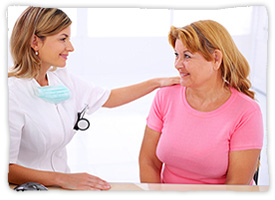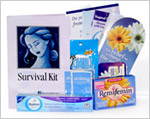Transdermal hormone patches may be safer than oral hormone therapy.
 Hormone therapy is prescribed for troublesome symptoms during menopause. While very effective in treating symptoms such as hot flashes, night sweats and mood changes, its use has declined due to safety concerns. These safety concerns became very well publicized after the 2002 report from the Women’s Health Initiative study. Click here for more information.
Hormone therapy is prescribed for troublesome symptoms during menopause. While very effective in treating symptoms such as hot flashes, night sweats and mood changes, its use has declined due to safety concerns. These safety concerns became very well publicized after the 2002 report from the Women’s Health Initiative study. Click here for more information.
Currently, the use of hormone therapy is still considered the gold standard for treating moderate to severe menopause symptoms. Due to safety concerns, use is generally limited to the lowest effective dose for the shortest time frame. However, women still have concerns about the potential risks associated with hormone therapy use. Fortunately, there is new research showing a potential benefit to alternative ways that hormone therapy is administered.
Hormone therapy is commonly administered in an oral tablet form. However, hormones can also be delivered effectively via the skin in a transdermal patch form. Due to the manner in which the hormone is metabolized once absorbed, practitioners have wondered if the patch is a safer way to deliver hormones. Click here for more information.
Good News for Women
Fortunately, two recent studies have found the transdermal patch to be a potentially safer way to administer menopause hormones. Most recently, Dr. Suissa and colleagues from McGill University in Montreal reported that the use of a low dose estrogen patch does not seem to increase the risk of stroke(1). In March, the same group reported that the patch was not associated with an increased risk of blood clots in postmenopausal women. Read more…



